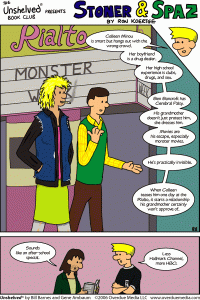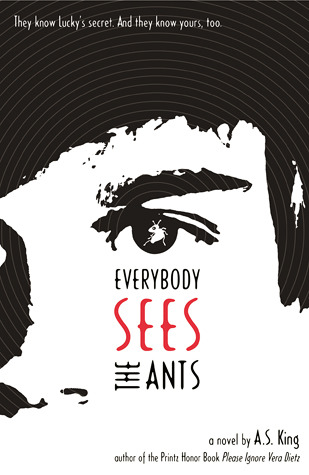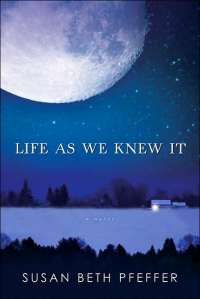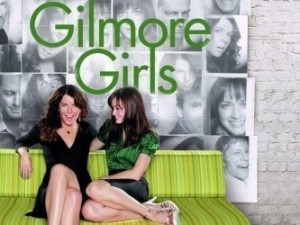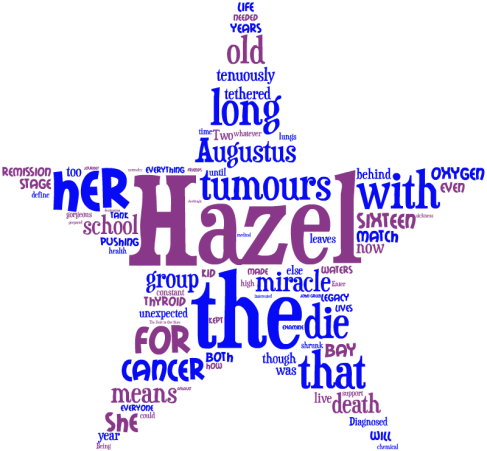 Confessions of a Blabbermouth
Confessions of a Blabbermouth
Written by Mike Carey and Louise Carey
Art by Aaron Alexovich
ISBN: 1401211486
Published by DC Comics (Minx)
Date of Publication:
Reader’s Annotation:
When Tasha’s Mom starts dating an intensive newspaper columnist, she’s find out that truth is often stranger than fiction.
Plot Summary:
Tasha is a modern girl. With her popular blog, Tasha can connect with a large audience around the world. Her mother runs an online lingere store and suffers from bad-boyfriend syndrome.
Tasha doesn’t want to meet her mom’s new dating prospect, a romance writer by the name of Jed. Tasha isn’t quite sure that she likes him and tries to avoid any interaction when she can. Jed’s daughter, Chloe, is a young newspaper columnist and now attends Tasha’s school. As Chloe and Tasha deal with their new roles, while their parents continue to date, each discovers that there’s more to the surface they either of them first perceived.
Between Tasha’s blogging and Chloe’s column, the girls also discover that just because you use words in public, doesn’t mean that their meanings are true. Each must find their own voice and the power to speak up before their voices are replaced with another person’s words..
Critical Evaluation:
Tasha and Chloe are like every other modern young girl in the world. They experience heartache, pain, and love in the harsh world of high school. Bullies threaten you during one day and parents punish you on the next day. As your emotions become more disastrous with each wrong turn, the only way out would be to find an outlet in which to express yourself.
As blogging and social networks have shown, young people use this as a means to express that frustrations or joy in their daily lives. But as it is proven in reality, and with Tasha’s experience, it can come back to haunt you. How you present yourself online versus how you present yourself in the real world can vastly different. How you deal with these situations is how you grow-up and become the person you were meant to be. The internet is a means to establish your voice, but it can also be your enemy.
Author Mike Carey’s writing collaboration with his daughter Louise provides for an entertaining read. The accompanying art by Aaron Alexovich provides a manic tone which matches Tasha’s personality.
Information about the Authors:
From Mike Carey’s Webpage, about a British author, whose works include comic books and original prose, has been a writer since the early 1990s. Carey’s work with Vertigo Comics (Sandman-spinoffs) have lead to the creation of the original series The Unwritten, which we co-collaborates with artist Peter Gross. Carey is the author of the Felix Castor novels.
Louisa Carey is the daughter of Mike Carey. An inspiring writer whose work has been featured on the London Metropolitian Archive, Louisa has recently collaborated with her parents for the soon to be published boo, The Steel Seraglio.
Information about the Artist:
From Aaron Alexovich’s Facebook page, graduated from the California Institute of Arts with a focus on Character Animation. Alexovich has worked on comic books through DC Comics and SLG Publishing as well as animation on the Invader Zim cartoon.
Aaron Alexovich on Twitter
Aaron Alexovich’s Web Page and Comic
Genre:
Realistic Fiction, Family Relationships
Curriculum Ties:
Journal Writing, Plagarism
Booktalking Ideas:
How do you connect with others on the Internet?
Is it important to be yourself or to have a fake name on the Web?
Reading Level/Interest Age:
Ages 15 and up
Challenging Issues:
There are no current challenges for this book. The American Library Association’s Guide to Library Materials Challenges is a great resource if the book is challenged in the future.
Potential Issues would include profanity and slight violence.
Why did I include this book in the title selections?
When the Minx line first came out, I thought that the selections were fun and approachable for teen readers, especially for teen girls. While the publishing line has been discontinued, the books still remain fun and approachable.
Reference:
Alexovich, A. (n.d). About. Facebook. Retrieved from https://www.facebook.com/aalexovich/infoAlexovich
Carey, M. (n.d.) About. Retrieved from mikeandpeter.com/


